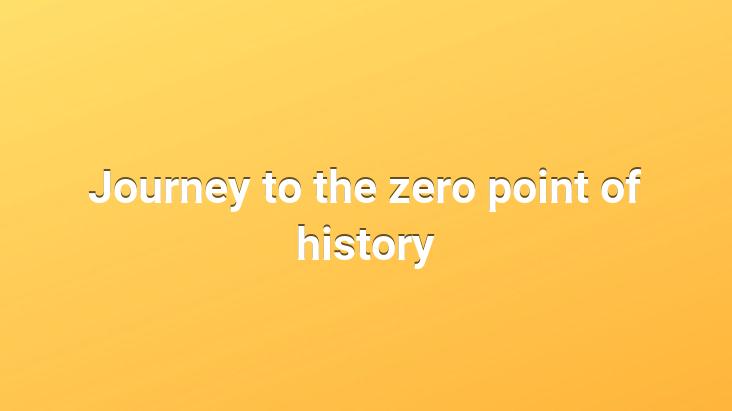As Anatolia, the meeting point of civilizations, looks like a natural open-air museum, unfortunately, the people living in this land cannot protect the works of this deep-rooted museum.. While we are not aware of the precious treasure we have; Learning that many developments that shape world history and change the course of humanity are taking place in our own lands gives us unique feelings. If we can at least ask the question “what happened in the past”, then we will be able to understand why all the world travelers come to Turkey much more easily.
The City of Prophets Urfa has been mentioned with the conflicts that took place 30 kilometers south of it in recent months, but witnessing the “zero point of history” It excites those who want it.
We persuade the team to go to Göbeklitepe, which has managed to shelve all the information about the transition to settled life, with our persistent attempts.
Some of our team members have “a few stones” Even though I get angry at their cries of “what will happen if we see them in this heat”, I say that there is no need to be nervous.
Göbeklitepe is a name inspired by the landforms of the people living in the region.. Does not reflect any historical fact. TÜRSAB officials are trying to serve the visitors under a few umbrellas at the entrance of the excavation site under difficult conditions. /p>
It’s wonderful to be breathing in this land, which reveals that everything known in the world is actually wrong.
We can’t approach the information signs left and right because of the tourist group that just arrived before us.. In the footsteps of our friends who have experienced Göbeklitepe before, we get away from the crowd and head towards the excavation site.
While walking around the ruins of Göbeklitepe, which is covered with a wooden roof, the feeling of being right next to the traces left by people about 12 thousand years ago cannot be described. .
Excavations started in 1995
Excavations in Göbeklitepe, which is home to the oldest temple ruins in the world, started in 1995.. While the region, which is expressed as the temple center of the Neolithic Age, excited the world of archeology, the mystery of the construction of temples by humanity, who has not yet settled down, has still not been solved. These structures say hello to travelers as the oldest known structures in the world today.. The reliefs on the obelisks give information about the living conditions of that period.
Dead buried in the sun
As a result of the excavations carried out so far, the settled In Göbeklitepe, where there is no tradition of burying the dead, human beings who have not met with life have a practice called “burying the dead in the sun.”. It is believed that with the birds reaching the sky, the spirits will reach the sky as well.. Reliefs of birds of prey on the stones strengthen the assumptions about this tradition.
In the center of 10-12 T-shaped obelisks, two obelisks facing each other, higher than the others, are in human form throughout. Hand, arm, various animals and abstract symbols are depicted in relief or carving.
Various ideas and discussions about the region continue intensely.
Among the interesting finds unearthed in Göbeklitepe, the desert animal, reptile reliefs, wolf heads with open mouth and terrifying fangs, wild boars, crane, bull, wild duck, stork, fox, snake, scorpion, wild sheep, lion, spider and headless human relief, phallus exaggerated depicted male statues etc.. takes place. The findings are important findings reflecting the beliefs of the people of this period who settled down 12,000 years ago.
Bull, wild boar, fox, snake, crane and wild duck are the most common animals. is among the images. In addition to these animal depictions dug on the stones, other depictions made in the form of three-dimensional reliefs were also identified.. The most important of these is considered to be the lion relief depicted descending from the side of the ‘T’ shaped column.
Huge columns
<
The ‘T’ shaped pillars depicting stylized people range in weight from 40 to 60 tons. The answers to many independent questions still lie under the soil in the region, which was not used for any other purpose after 8 thousand BC. It is still a mystery what kind of mechanism the structures are transported.. Göbeklitepe, which is estimated to have around 300 obelisks, was included in the UNESCO World Heritage Tentative List a while ago.
Theses have disappeared
<
Today, while wandering around the obelisks, which are 2-3 meters below the ground, we try to choose all the relief figures as much as possible.
Today, even in the “new world” where all technological possibilities have developed and there is no distance between people, it is difficult to move. It is very difficult to predict the life of a thousand years ago.
Göbeklitepe has also managed to eliminate the logic and widespread belief that human beings built structures for their beliefs after transitioning to agriculture and sedentary life.
Even before human beings settled down yet. He built temples and performed rituals in line with his beliefs.
Excavations are expected to continue for nearly 100 years at Göbeklitepe, a small part of which has yet to meet the sun.
Wish tree
Reveal so far This time, we come to the black mulberry tree, which struggles to survive alone in the archaeological center, which stunned the whole world with the artifacts left behind.
When we climb up from the excavation site and reach the tree, we wish good luck to the world with the wish materials that our friends cut out of their bags…
Roads to Şanlıurfa to greet Göbeklitepe, which is the zero point of history “for now”…

